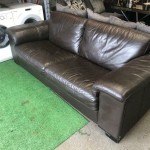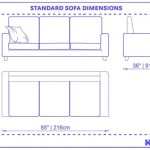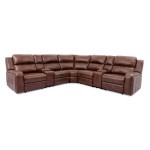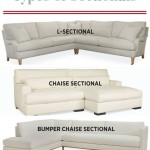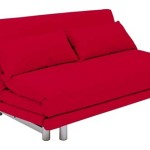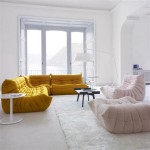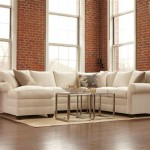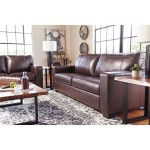The Pursuit of Ultimate Comfort: Exploring Slipcovered Sofas
The sofa stands as a centerpiece in many living spaces, serving as a focal point for relaxation, conversation, and entertainment. Choosing a sofa involves considering various factors, including style, size, durability, and, crucially, comfort. While numerous sofa designs vie for attention, the slipcovered sofa has emerged as a popular choice, prized not only for its aesthetic versatility but also for the potential comfort it offers. This article aims to explore the reasons behind the comfort associated with slipcovered sofas, delving into the different aspects that contribute to the overall experience.
Slipcovered sofas distinguish themselves through their removable fabric coverings, often referred to as slipcovers. These covers encase the entire sofa frame, providing an additional layer of material between the user and the sofa's internal structure. This layer can substantially impact the sofa's overall comfort level, depending on the materials used and construction techniques employed.
Fabric Selection and its Impact on Comfort
The type of fabric used for the slipcover plays a key role in determining the sofa's comfort. Different fabrics possess distinct characteristics that affect how they feel against the skin, their breathability, and their overall texture. Natural fibers like cotton and linen are often favored for their softness and breathability. Cotton, in particular, is known for its gentle feel and ability to absorb moisture, making it a comfortable choice for warmer climates. Linen, while possessing a slightly coarser texture than cotton, offers excellent durability and breathability, contributing to a cooler seating experience.
Synthetic fabrics, such as polyester and microfiber, also frequently find use in slipcovers. Polyester is known for its resilience, resistance to wrinkles, and affordability. Microfiber, on the other hand, boasts a velvety soft texture and exceptional durability, making it a comfortable and practical choice for households with children or pets. The blend of natural and synthetic fibers can also create a balance of properties. For example, a cotton-polyester blend can offer the softness of cotton with the added durability and wrinkle resistance of polyester.
The weave of the fabric also influences its comfort. A looser weave allows for better airflow, enhancing breathability and preventing the build-up of heat. A tighter weave, while potentially less breathable, might offer a smoother and more luxurious feel. Ultimately, the ideal fabric choice depends on individual preferences and the specific climate in which the sofa will be used.
The Role of Fill Materials in Enhancing Comfort
While the slipcover fabric contributes to the surface feel of the sofa, the fill materials within the cushions and frame play a crucial role in providing support and overall comfort. The most common filling options include foam, down, feathers, and various combinations of these materials.
Foam cushions offer a balance of support and comfort, and are available in varying densities. High-density foam provides firmer support, while lower-density foam offers a softer, more plush feel. Memory foam, a type of polyurethane foam, conforms to the body's shape, providing customized support and pressure relief. This makes it a popular choice for individuals seeking enhanced comfort and pain relief.
Down and feather cushions offer a luxurious and exceptionally soft seating experience. These materials provide excellent cushioning and conform to the body's shape, creating a feeling of enveloping comfort. However, down and feather cushions require more maintenance than foam cushions, as they need regular fluffing to maintain their shape and prevent clumping. They may also not be suitable for individuals with allergies.
Many sofas utilize a combination of fill materials to achieve a balance of support and comfort. For example, a sofa might feature a foam core for support, wrapped in a layer of down or feathers for added softness. The optimal combination of fill materials depends on individual preferences and the desired level of support and plushness.
Construction and Design Elements Contributing to Comfort
Beyond the fabric and fill materials, the overall construction and design of the slipcovered sofa significantly impact its comfort. The frame construction, the suspension system, and the design of the cushions all contribute to the overall seating experience.
A sturdy and well-constructed frame provides a solid foundation for the sofa, ensuring that it can withstand regular use and maintain its shape over time. Hardwood frames are generally considered to be the most durable and long-lasting. The suspension system, which supports the cushions, also plays a crucial role in comfort. Traditional coil springs provide good support and resilience, while sinuous springs offer a more flexible and forgiving feel. Webbing systems, often used in conjunction with springs, can further enhance the support and comfort of the sofa.
The design of the cushions also contributes to the overall comfort. Cushions with rounded edges and generous proportions tend to be more comfortable than those with sharp corners and minimal padding. Back cushions that are angled slightly backward provide better lumbar support and encourage a relaxed posture. The depth of the seat also affects comfort. A deeper seat allows for more lounging space, while a shallower seat is better suited for upright seating.
The slipcover itself can also influence comfort through its design. A well-fitted slipcover will stay in place and prevent wrinkles, contributing to a smoother and more comfortable seating surface. Slipcovers with features like elastic hems or ties can help to ensure a secure fit. Some slipcovers also incorporate additional padding or quilting to enhance comfort.
Furthermore, the arm style contributes to overall comfort. Rolled arms offer a traditional, comfortable place to rest one's arms, while track arms present a more contemporary and streamlined look. The height of the arms should also be considered for optimal comfort.
In addition to the elements discussed above, other factors can further enhance the comfort of a slipcovered sofa. The addition of throw pillows can provide extra support and cushioning, while a soft and cozy throw blanket can add warmth and comfort. The placement of the sofa within the room can also influence the overall experience. Placing the sofa in a well-lit and airy space can create a more inviting and comfortable atmosphere.
Ultimately, the "most comfortable" slipcovered sofa is a subjective concept, as individual preferences for firmness, texture, and support vary considerably. However, by carefully considering the fabric selection, fill materials, and construction details, individuals can choose a slipcovered sofa that provides the optimal level of comfort for their specific needs and preferences. The versatility of slipcovers also allows for easy customization and updates, enabling individuals to adapt their sofa to changing tastes and seasons. Investing time and effort in researching and selecting the right slipcovered sofa can significantly enhance the comfort and enjoyment of one's living space.
:max_bytes(150000):strip_icc()/wimberly-9bd7338fd91e41bf9d1fe5e7c3aff239.jpeg?strip=all)
The 8 Best Slipcovered Sofas For Busy Households

A Guide To The Best Affordable White Slipcovered Sofas Site Title

Pottery Barn Sofa Review Faqs For Pb Comfort Slipcovered

Pottery Barn Sofa Review Faqs For Pb Comfort Slipcovered

Pottery Barn Sofa Review Faqs For Pb Comfort Slipcovered

The 7 Best Sofas Of 2025 Reviews By Wirecutter

The Best And Most Comfortable Slipcovered Sofas Of 2024

The Best And Most Comfortable Slipcovered Sofas Of 2024

Eileen Textured Woven Slipcover Sofa World Market

Ava Chaise Slipcovered Sofa Grandin Road

